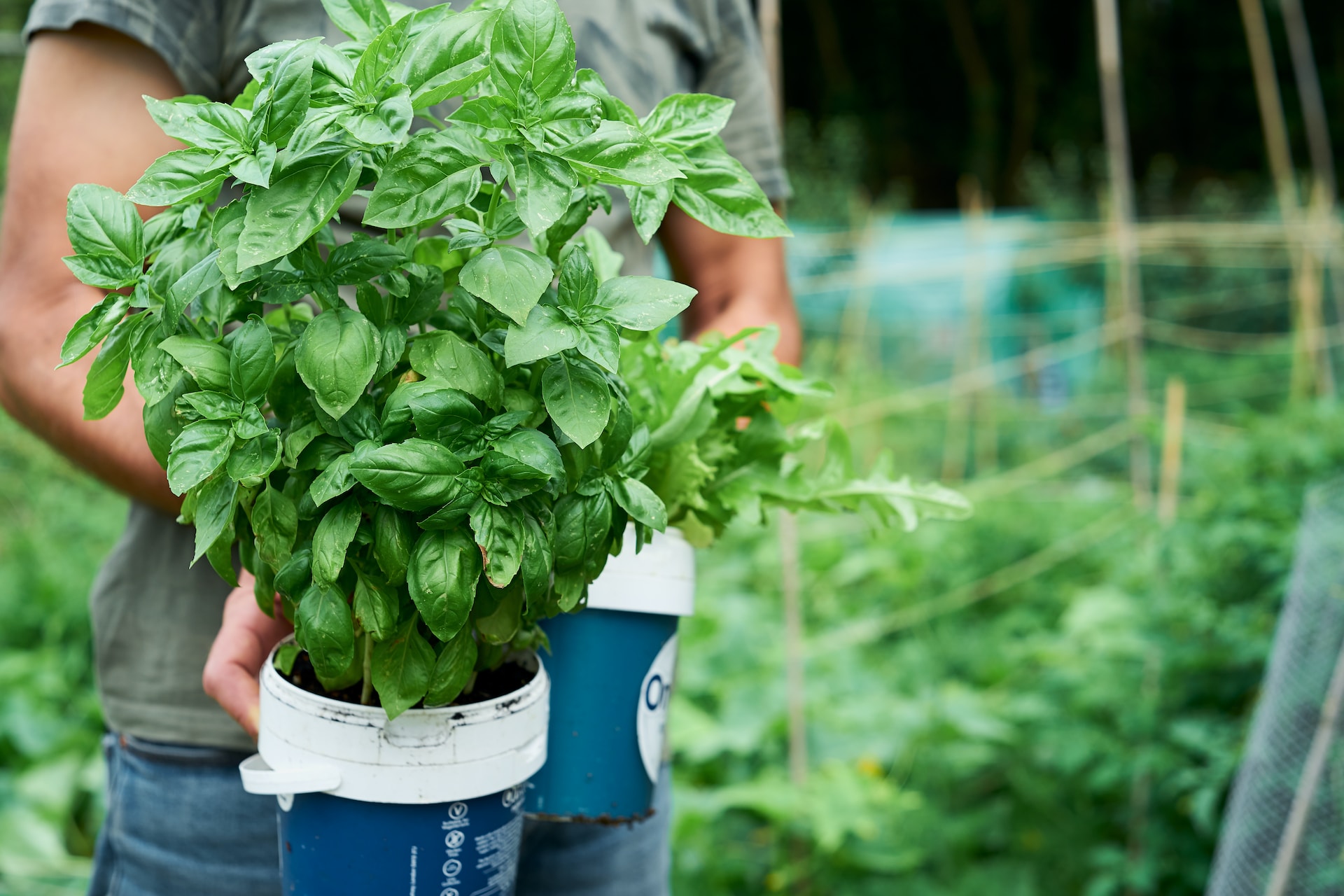I have a confession, I am not a basil growing expert and I pretty much put no effort into my basil patch. It smells nice and we freaking love us some pesto and other basil heavy dishes so we need a lot of it. But that’s sort of where the passion ends. Basil is a means to an end to me.
And you know what? I think that’s fine. It’s a leafy herb and it pretty much grows like a weed if you let it and just don’t sweat the small stuff. Save that anxiety for the tomatoes.
Anyways, today I want to share with you the short list of basil growing tips that I think actually matter and a few things to just not worry about.
Basil Growing Tips
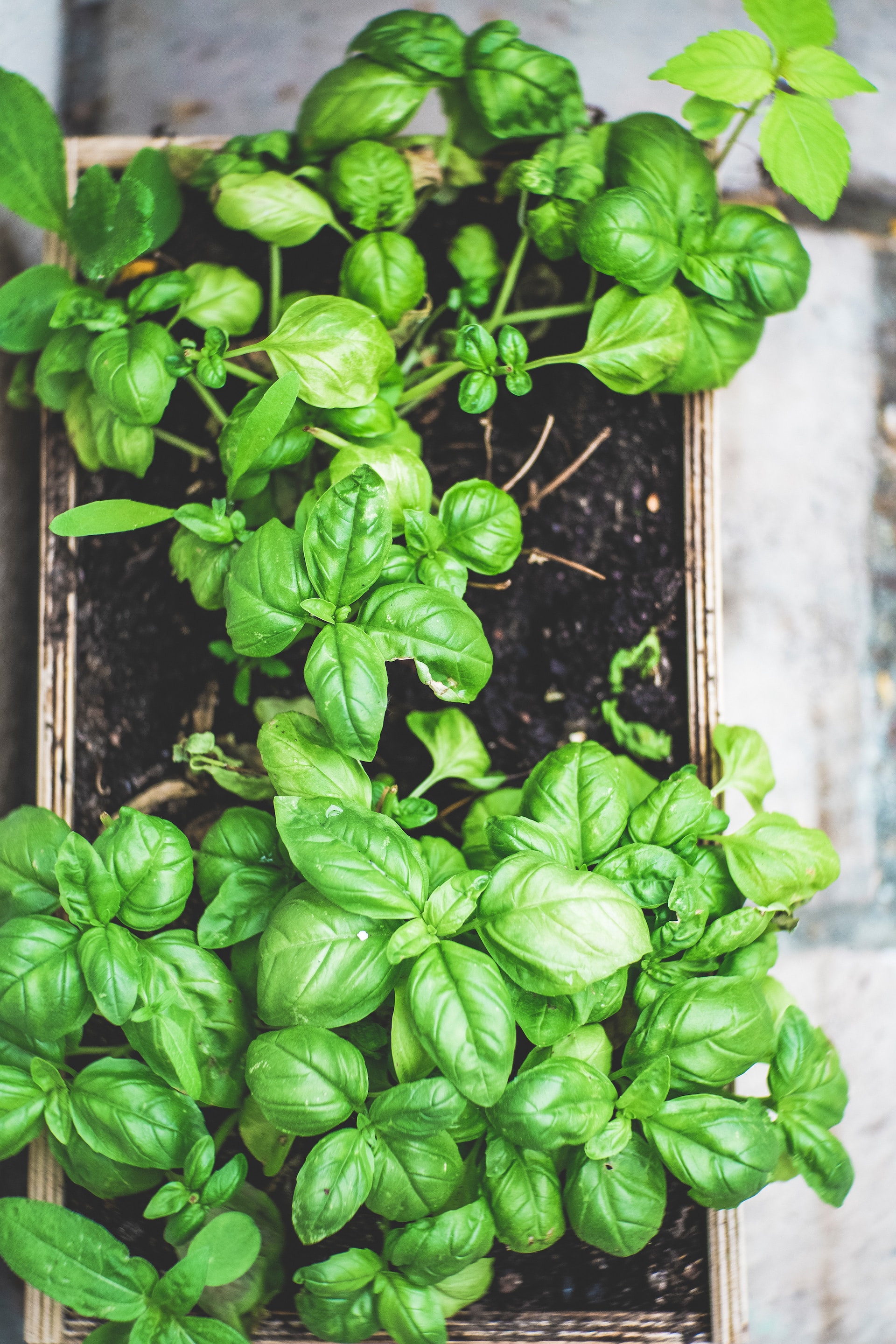
1. Plant Densely
We packed around 18 basil plants of varying sizes in about 25 gallons of dirt, and they thrived. That’s my first and biggest tip - plant your basil nice and dense. Like super dense. Jamming my basil together has been the single most impactful change I’ve made to how we grow this plant.
In fact, one study found that during the Summer/Fall shoulder season, basil leaf output was maximized by planting 40 plants per square meter. Now that’s dense.
Typical guidelines are to place basil plants every 4-8 inches in a row, but I err on the more dense side of that and then proceed to not worry about it all.
By the way, if you want a visual guide on how to follow these basil tips, we do have a video with the same steps available here:
2. Water Basil Generously
I companion-planted my basil with some bush beans and found that the beans really suffer when they get the amount of water the basil likes. I actually lost some beans early on due to overwatering and damping off, but the basil just shrugs it all off.
Especially if you live in a hot climate, I would try to think of basil as a bit of a waterhog and either provide it with extra water or grow it in a medium that retains a lot of moisture.
3. Basil Prefers a Bit of Shade
Grow your basil in a location that qualifies as partial shade. They might become a bit leggy, but these plants still grow fine in 4-6 hours of sun.
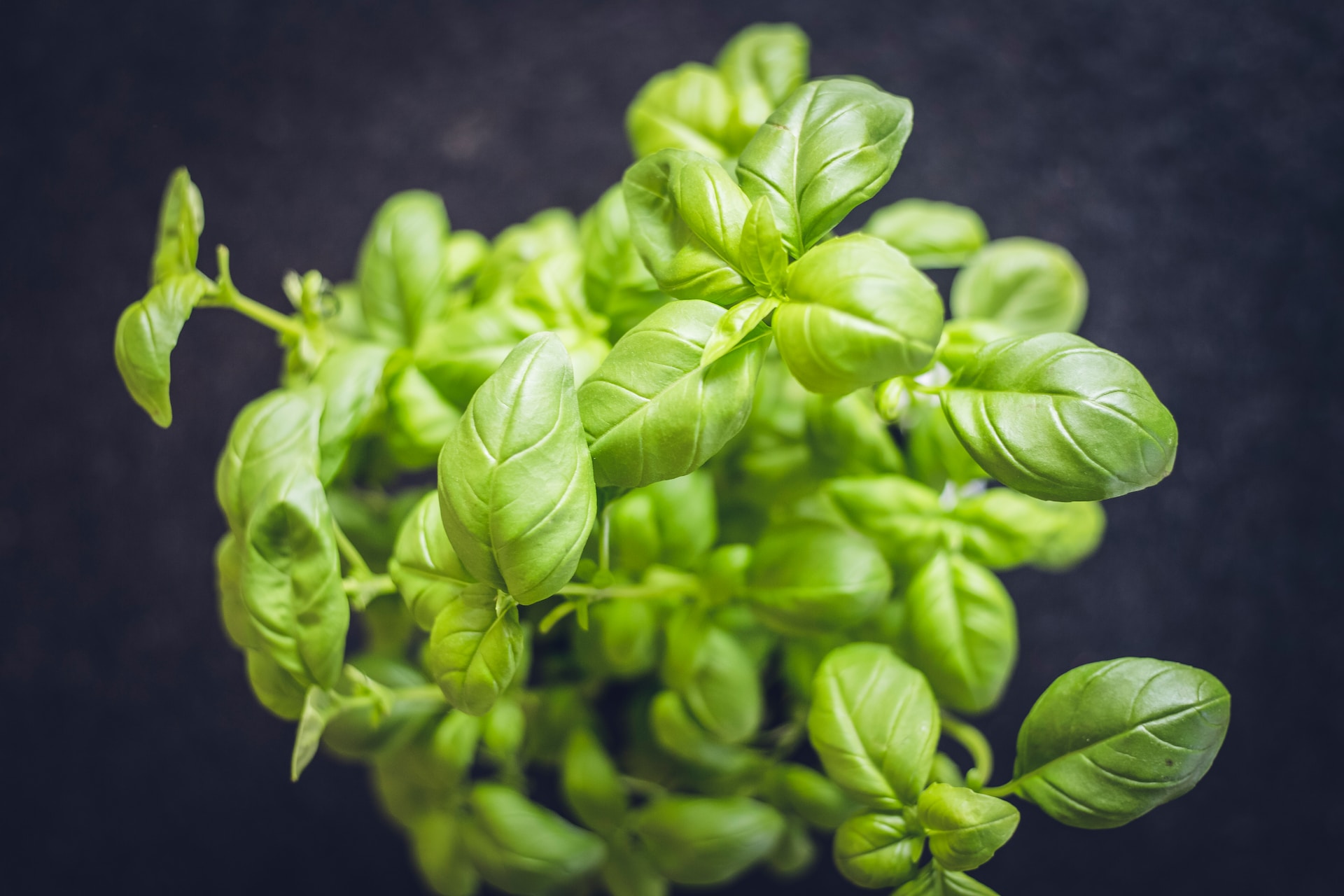
And leggy plants with nice big tasty leaves are just fine with me when the alternative is a stunted plant with sunburned leaves when planted in full sun. But hey, at least those sunburned, shriveled plants can still serve their own purpose as delightful flowers.
I should qualify this advice a little by saying I live in a very hot climate with early September hitting in the 110s Fahrenheit (or about 43C). Growing basil here requires either sacrificing some plant growth by placing them in a shaded location or using gardeners shade cloth.
4. Grow Large Leaf Basil AKA Sweet Italian Basil
There are so many cool varieties of basil and I don’t want to downplay that fact. I’ve grown at least 15 tomato varieties over the last year just for the fun of it, so if you’re into basil varieties, I’m not one to judge!
But if you’re like me and you just want a lot of large, tasty leaves that are good for pizza toppings, grinding into spice mixes, and most importantly, pesto: I strongly recommend Italian Large Leaf basil. Aka sweet basil.
It’s considered a pesto basil, it’s a little sweeter than Genovese, and it also is a larger plant with larger leaves. I’ve found it to be not just tasty and productive but really hardy against pests and diseases too. And I pick my seed packets up for a dollar.
5. Keep Planting Throughout the Season (Succession Cropping)
I personally always have better luck when I transplant my basil compared to direct sowing. I think that’s particularly good advice if you grow the basil in soggy clay soil like ours or when it’s well into summer and too hot to get a good germination rate.
And similarly, I’m not too precious about taking out a plant to make room for a new one. If you notice a plant is getting a little gnarly, yank it out to let all the others get some extra sun! In the meantime, you can start a couple seeds to replace it with.
Some folks do this pull and replace schedule methodically because they prefer the taste of leaves from younger plants. That strategy of removing and replacing your plants is called succession cropping and works well with basil even though it’s not strictly necessary.
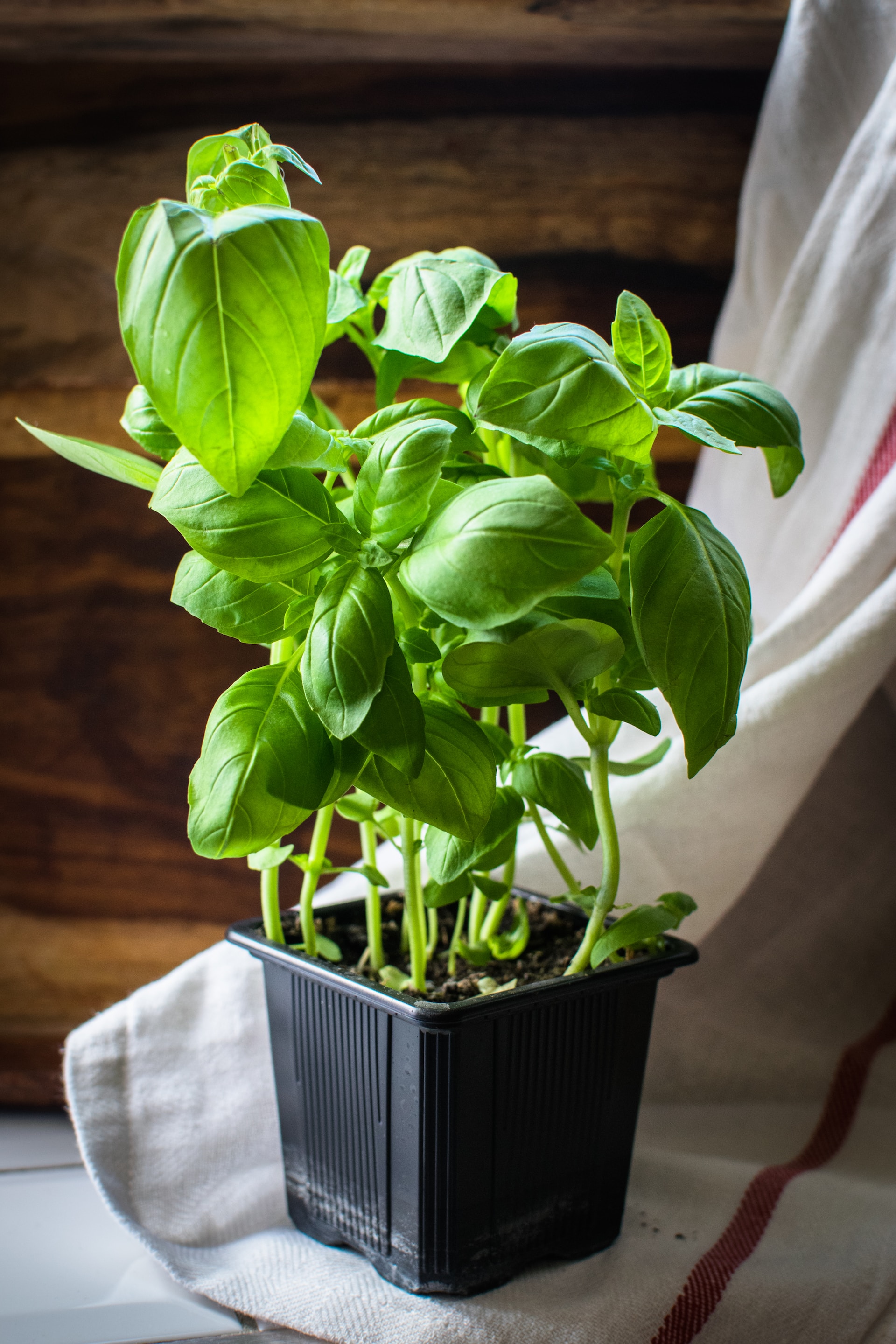
So to wrap up, if you just want to get a patch of basil going and not think about it too much, here’s what I recommend:
- Grow large leaf basil from seed, not a grocery store start
- Put it somewhere where it won’t get a ton of sun if you’re in a hot climate
- Plant it really densely, like more densely than you’re thinking right now
- Water it really well
- Don’t be afraid to rip it out and replace it
Stuff You Don’t Need to Worry About
Trellising
It’s floppy. And that’s just fine.
Perfect soil
We used 50% native clay soil leftover from other projects and literal wood chips to grow our basil in. As long as there’s water and nutrients, basil seems fine with it.
It is a surprisingly hungry plant for an herb though.
A little bit of bolting
I used to believe that basil bolting meant the plant was no longer any good and would cause the leaves to go bitter. This can happen really fast with other herbs.
But with basil, all you need to do is pinch off those flowers when you see them and keep on harvesting. The leaves remain totally delicious.
Pruning outside of harvesting
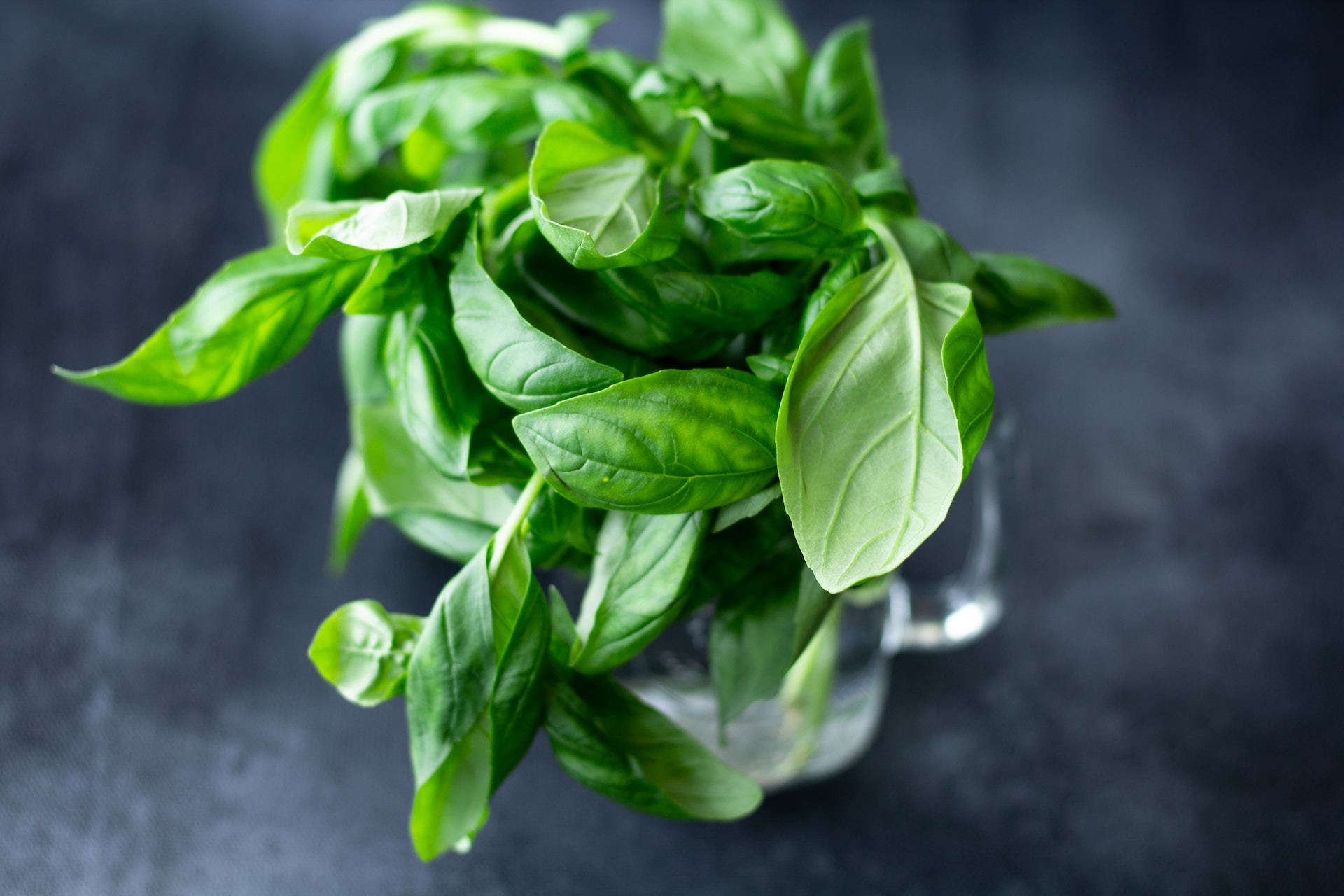
Basil actually really benefits from a strategic pruning regiment.In Fact, if you do it right, you can take one little seedling and really turn it into a bushy monster of a plant.
But I’ve got hundreds of other plants to prune and I just don’t have time to be really methodical with that, so instead I combine pruning with harvesting. When I want some extra basil but don’t have any reason to rip out the plant, we’ll look at each branch and cut off the top right above a leaf node. That way it grows back in a bushier format.
And honestly that’s it. We’re not going to win any basil awards, but we get lots of it and I basically never have to think about it except when I’m harvesting or eating it. I did say this was the lazy take!
Happy gardening!
